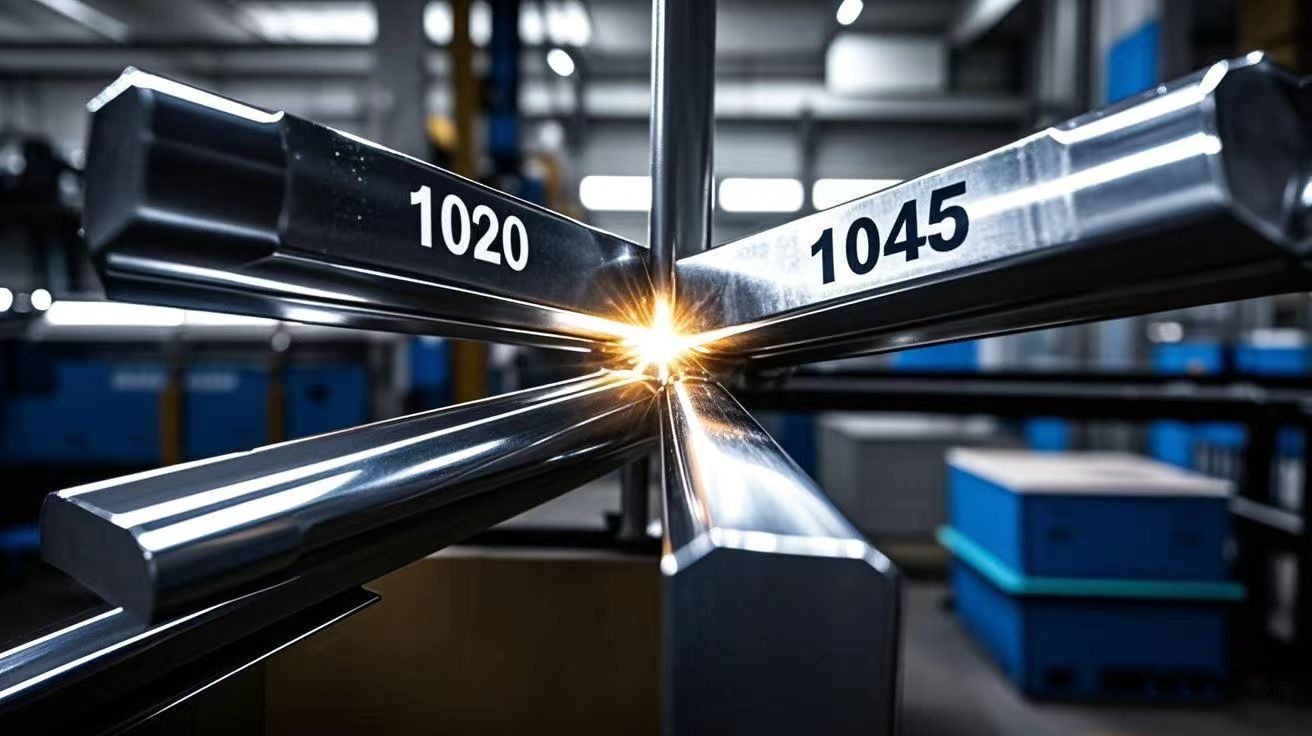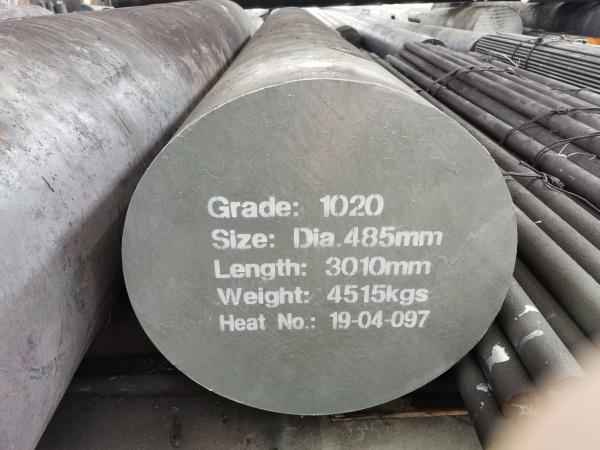1020 steel vs. 1045 steel: Strength and processability game in material selection decision
In mechanical design and manufacturing, the selection of low-carbon steel (such as 1020 steel) and medium-carbon steel (such as 1045 steel) often leads to the difficult trade-off between “strength and processability”. Although both are ordinary carbon steels, their mechanical properties, processing characteristics and applicable scenarios are completely different due to the difference in carbon content (1020 steel contains 0.20% carbon, 1045 steel contains 0.45% carbon).
This article provides engineers and purchasing decision makers with a scientific material selection basis by comparing and analyzing the core parameters, process limitations and economy of the two.
1. Basic performance comparison: strength, hardness and ductility
1.1 Comparison For Chemical composition and microstructure
- 1020 steel: C 0.18%~0.23%, Mn 0.30%~0.60%, mainly ferrite + a small amount of pearlite, soft and tough structure.
- 1045 steel: C 0.43%~0.50%, Mn 0.60%~0.90%, the proportion of pearlite is significantly increased, and the hardness and strength are improved.
1.2 Comparison For Mechanical properties (unheat-treated state)
| Parameters | 1020 steel | 1045 steel |
| Tensile strength (MPa) | 420~550 | 570~700 |
| Yield strength (MPa) | 350~400 | 450~550 |
| Elongation (%) | 15%~25% | 12%~18% |
| Brinell hardness (HB) | 120~150 | 170~210 |
Conclusion: The strength and hardness of 1045 steel are significantly better than those of 1020 steel, but its ductility (plastic deformation ability) decreases, and its tendency to work hardening is more obvious.
2. Machinability Game: Cutting, Welding and Forming
2. 1 Machinability
- 1020 steel: low carbon + low hardness, small cutting resistance, slow tool wear, suitable for high-speed machining and complex parts finishing.
- 1045 steel: medium carbon + high hardness, easy to produce work hardening, need to reduce cutting speed (about 60% of 1020 steel), and use coated tools (such as TiN) to suppress built-up edge.
Cost impact: The processing efficiency of 1045 steel is reduced by 15%~30%, and the tool cost is increased by 20%.
2.2 Weldability
- 1020 steel: The low carbon content makes it extremely weldable, no preheating or post-heat treatment is required, and the risk of weld cracks is low.
- 1045 steel: The carbon equivalent (CE) is relatively high (about 0.45%), and it needs to be preheated to 150~260℃ during welding, and the interlayer temperature is controlled, otherwise cold cracks are easy to occur.
Case: A steel structure manufacturer mistakenly used 1045 steel to weld a bracket, which caused cracks in the weld due to lack of preheating. After using 1020 steel, the yield rate increased to 98%.
2.3 Cold formability
- 1020 steel: High ductility, suitable for cold processing such as stamping, bending, deep drawing, and the forming limit ratio (LDR) can reach more than 2.0.
- 1045 steel: Springback and edge cracking are prone to occur during cold forming, and complex shapes require hot forming (heating to above the recrystallization temperature).
3. Performance improvement after heat treatment: potential and limitations
3.1 1020 steel: dependent on surface modification
- Through carburizing and quenching, the surface hardness can reach 55~62 HRC, but the core still maintains toughness (hardness ≤150 HB).
- Suitable for parts that require “hard surface and toughness inside” (such as gears, cams).
3.2 1045 steel: overall hardenability advantage
- After oil quenching or water quenching, the overall hardness can reach 50~55 HRC, and the tensile strength is increased to 800~1000 MPa.
- Suitable for high-load shafts, connecting rods and other parts that require overall strengthening.
Risk warning: The risk of quenching deformation and cracking of 1045 steel is higher than that of 1020 steel, and the cooling rate needs to be strictly controlled (such as graded quenching).
4. Material selection decision framework: four-dimensional evaluation model
4.1. Load conditions
- High static load: 1045 steel is preferred (such as crane hook);
- Impact load: 1020 steel is preferred (toughness absorbs energy).
4.2. Processing complexity
- Precision cutting parts: 1020 steel (reduce tool wear);
- Simple forgings: 1045 steel (take advantage of strength).
4.3. Cost sensitivity
- Limited budget + large batch: 1020 steel (comprehensive material and processing costs are 10%~15% lower);
- High value-added parts: 1045 steel (performance premium can cover costs).
4.4. Post-maintenance
- Wear-resistant scenario: carburized 1020 steel (surface repairable);
- Fatigue life requirements: quenched and tempered 1045 steel (high overall strength, resistance to microcrack propagation).
5. Practical cases: selection errors and optimization
Case 1: Conveyor belt roller fracture
- Problem: A manufacturer used 1020 steel to manufacture heavy-duty rollers, and the journal fatigue fractured after 3 months of operation.
- Analysis: The yield strength of 1020 steel is insufficient (400 MPa) and cannot withstand cyclic bending stress.
- Improvement: Switch to quenched and tempered 1045 steel (yield strength 550 MPa), and the service life is extended to 2 years.
Case 2: Sheet metal shell forming cracking
- Problem: The edge of a certain equipment shell cracked during cold stamping with 1045 steel, and the scrap rate was 30%.
- Analysis: The material ductility is insufficient, and the local strain exceeds the forming limit.
- Improvement: Switch to 1020 steel and optimize the mold radius, and the scrap rate is reduced to 3%.
6. Future trends: material upgrade and replacement technology
- Composite process: 1020 steel surface laser cladding + 1045 steel core (taking into account both strength and wear resistance);
- Lightweight substitution: high-strength steel (such as HSLA 350) gradually replaces 1045 steel, with equivalent strength but 15% weight reduction;
- Digital material selection: predict part failure mode based on CAE simulation, and intelligently recommend steel types and process chains.
7. Summary
The essence of the game between 1020 steel and 1045 steel is the balance between “performance redundancy” and “cost efficiency”. Engineers need to jump out of the single parameter comparison and comprehensively consider the design requirements, process chain adaptability and full life cycle cost. With the penetration of new materials and intelligent technologies, the selection logic of traditional carbon steel will continue to evolve, but the core principle of “defining materials by scenarios” will never fade.




